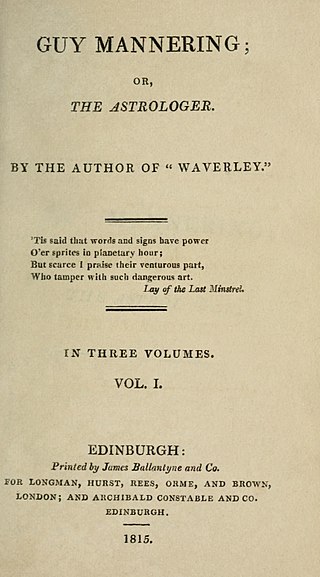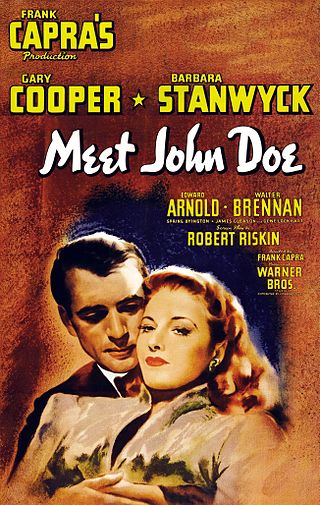
Alfred Damon Runyon was an American journalist and short-story writer.

Paint Your Wagon is a Broadway musical comedy, with book and lyrics by Alan J. Lerner and music by Frederick Loewe. The story centers on a miner and his daughter and follows the lives and loves of the people in a mining camp in Gold Rush-era California. Popular songs from the show included "Wand'rin' Star", "I Talk to the Trees" and "They Call the Wind Maria".

Henry Jaynes Fonda was an American actor whose career spanned five decades on Broadway and in Hollywood. On screen and stage, he often portrayed characters that embodied an everyman image.

Dead End is a 1937 American crime drama film directed by William Wyler. It is an adaptation of the Sidney Kingsley 1935 Broadway play of the same name. It stars Sylvia Sidney, Joel McCrea, Humphrey Bogart, Wendy Barrie, and Claire Trevor. It was the first film appearance of the acting group known as the Dead End Kids.

Robert Louis Fosse was an American actor, choreographer, dancer, and film and stage director. He directed and choreographed musical works on stage and screen, including the stage musicals The Pajama Game (1954), Damn Yankees (1955), How to Succeed in Business Without Really Trying (1961), Sweet Charity (1966), Pippin (1972), and Chicago (1975). He directed the films Sweet Charity (1969), Cabaret (1972), Lenny (1974), All That Jazz (1979), and Star 80 (1983).

Ethel Merman was an American actress and singer. Known for her distinctive, powerful voice, and her leading roles in musical theater, she has been called "the undisputed First Lady of the musical comedy stage." She performed on Broadway in Anything Goes, Annie Get Your Gun, Gypsy, and Hello, Dolly!

Edgar John Bergen was an American ventriloquist, comedian, actor, vaudevillian and radio performer. He was best known for his characters Charlie McCarthy and Mortimer Snerd. Bergen pioneered modern-day ventriloquism and has been described by puppetry organization UNIMA as the “quintessential ventriloquist of the 20th century”. He was the father of actress Candice Bergen.

John Kay was an English inventor whose most important creation was the flying shuttle, which was a key contribution to the Industrial Revolution. He is often confused with his namesake, who built the first "spinning frame".

Heartbreak House: A Fantasia in the Russian Manner on English Themes is a play written by George Bernard Shaw, first published in 1919. The English language premiere was at the Garrick Theatre in November 1920. According to A. C. Ward, the work argues that "cultured, leisured Europe" was drifting toward destruction, and that "Those in a position to guide Europe to safety failed to learn their proper business of political navigation". The "Russian manner" of the subtitle refers to the style of Anton Chekhov, which Shaw adapts.

Guy Mannering; or, The Astrologer is the second of the Waverley novels by Walter Scott, published anonymously in 1815. According to an introduction that Scott wrote in 1829, he had originally intended to write a story of the supernatural, but changed his mind soon after starting. The book was a huge success, the first edition selling out on the first day of publication.

Meet John Doe is a 1941 American comedy-drama film directed and produced by Frank Capra, written by Robert Riskin, and starring Gary Cooper and Barbara Stanwyck. The film is about a "grassroots" political campaign created unwittingly by a newspaper columnist with the involvement of a hired homeless man and pursued by the paper's wealthy owner. It became a box-office hit and was nominated for an Academy Award for Best Story. It was ranked No. 49 in AFI's 100 Years ... 100 Cheers. In 1969, the film entered the public domain in the United States because the claimants did not renew its copyright registration in the 28th year after publication. It was the first of two features Capra made for Warner Brothers, after he left Columbia Pictures, the other being Arsenic and Old Lace (1944).

A Star Is Born is a 1937 American Technicolor drama film produced by David O. Selznick, directed by William A. Wellman from a script by Wellman, Robert Carson, Dorothy Parker, and Alan Campbell, and starring Janet Gaynor as an aspiring Hollywood actress, and Fredric March as a fading movie star who helps launch her career. The supporting cast features Adolphe Menjou, May Robson, Andy Devine, Lionel Stander, and Owen Moore.

Father's Little Dividend is a 1951 American comedy film directed by Vincente Minnelli and starring Spencer Tracy, Joan Bennett, and Elizabeth Taylor. The movie is the sequel to Father of the Bride.

The Great Gabbo is a 1929 American Pre-Code early sound musical drama film directed by James Cruze, based on Ben Hecht's 1928 short story "The Rival Dummy", and starring Erich von Stroheim and Betty Compson. The film features songs by Lynn Cowan, Paul Titsworth, Donald McNamee and King Zany.

A Farewell to Arms is a 1932 American pre-Code romance drama film directed by Frank Borzage and starring Helen Hayes, Gary Cooper, and Adolphe Menjou. Based on the 1929 semi-autobiographical novel A Farewell to Arms by Ernest Hemingway, with a screenplay by Oliver H. P. Garrett and Benjamin Glazer, the film is about a tragic romantic love affair between an American ambulance driver and an English nurse in Italy during World War I. The film received Academy Awards for Best Cinematography and Best Sound, and was nominated for Best Picture and Best Art Direction.

Millie is a 1931 American pre-Code drama film directed by John Francis Dillon from a screenplay by Charles Kenyon and Ralph Morgan, based on a novel of the same name by Donald Henderson Clarke. The film was an independent production by Charles R. Rogers, distributed by RKO Radio Pictures, after their acquisition of Pathé Exchange. It stars Helen Twelvetrees in one of her best roles, with a supporting cast that includes Lilyan Tashman, James Hall, Joan Blondell, John Halliday and Anita Louise.

The Dance of Life is a 1929 American pre-Code musical film. It is the first of three film adaptations of the popular 1927 Broadway play Burlesque, with the others being Swing High, Swing Low (1937) and When My Baby Smiles at Me (1948). The film was directed by John Cromwell and A. Edward Sutherland. Hal Skelly appeared in the lead role as Ralph “Skid” Johnson after playing the same role in the Broadway version at the Plymouth Theater. He took part in the production for fifty two weeks before leaving his role to take part in the film. Charles D. Brown, Ralph Theodore and Oscar Levant also appeared in the Broadway production.

Sinners in Paradise is a 1938 American south seas adventure film directed by James Whale and starring Madge Evans, John Boles, Bruce Cabot, Marion Martin and Gene Lockhart. In 1966, the film entered the public domain in the United States because the claimants did not renew its copyright registration in the 28th year after publication.

Beau Brummel is a 1924 American silent historical drama film starring John Barrymore and Mary Astor. The film was directed by Harry Beaumont and based upon Clyde Fitch's 1890 play, which had been performed by Richard Mansfield, and depicts the life of the British Regency dandy Beau Brummell.

Conspiracy is a 1930 American pre-Code mystery melodrama film produced and distributed by RKO Pictures and directed by Christy Cabanne. It is the second adaptation of the play The Conspiracy by Robert B. Baker and John Emerson and stars Bessie Love and Ned Sparks.




















